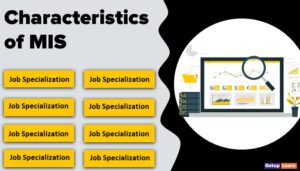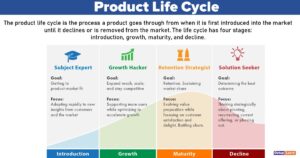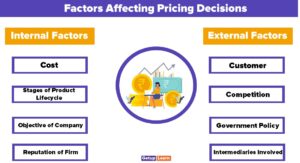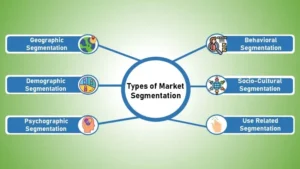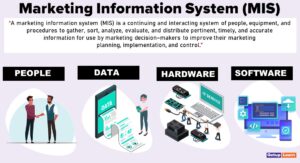Table of Contents
What is Data Collection?
Data collection is one of the most important stages in conducting research. Data collection is the process of gathering and measuring information on variables of interest, in an established systematic fashion that enables one to answer stated research questions, test hypotheses, and evaluate outcomes.
The data collection component of research is common to all fields of study including physical and social sciences, humanities, business, etc. While methods vary by discipline, the emphasis on ensuring accurate and honest collection remains the same.
Data collection starts with determining what kind of data is required followed by selecting a sample from a specific population. After that, use a particular instrument to collect the data from the selected model.
Principles of Data Collection
These are the following important principles of data collection given below:
Get Right Data
Collect data which are relevant to the specific topic or issue. For example, to better understand gender disparity in school, one must collect data on students separately for boys and girls.
Get Data Right
Collect data with precise definitions and appropriate methods of measurement. For example, data on new entrants in Grade 1 must not include those who actually attended another school, dropped out, and then enrolled in this school for the first time.
Get Data Right Away
Get current and timely data. For example, school censuses should be organized as close to the start of the school year as possible, once enrolment is complete and attendance has stabilized.
Get Data Right Way
Get data through a rigorous process which can guarantee data quality and ensure consistency. Instructions about methods and data standards must be explained clearly. The people involved in data collection should be properly trained.
Get Right Data Management
Collect reliable data which is guaranteed by good quality control conducted by relevant stakeholders.
It is important to involve all the stakeholders at different levels of the system to check that the collected data are reliable and complete before they are processed, analyzed and used. Always respect the motto: ‘Do not collect data that will not be used.’
Sources of Data Collection
There are major two types of data collection:
Primary Data
A primary source could be defined as something that was created either during the
the time period being studied or afterwards by individuals reflecting on their involvement
in the events of that time.
Following are the examples of Primary data:-
- Unpublished materials: Diaries, Letters
- Internet communications via email
- Interviews (e.g., telephone, e-mail )
- Journal articles
Advantages of Primary Data
The following are the points of advantages of primary data:
- The primary data are original and relevant to the topic of the research study so the degree of accuracy is very high.
- Primary data is that it can be collected in a number of ways like interviews, telephone surveys, focus groups etc. It can also be collected across national borders through emails and posts. It can include a large population and wide geographical coverage.
- Moreover, primary data is current and it can better give a realistic view to the researcher about the topic under consideration.
- The reliability of primary data is very high because these are collected by the concerned and reliable party.
Disadvantages of Primary Data
The following are the disadvantages of primary data:
- For a collection of primary data where the interview is to be conducted the coverage is limited and for wider coverage, a more number of researchers are required.
- A lot of time and effort are required for data collection. By the time the data collected, analysed and reported is ready the problem of the research becomes very serious or outdated. So the purpose of the research may be defeated.
- It has design problems like how to design the surveys. The questions must be simple to understand and respond.
- Some respondents do not give timely responses. Sometimes, the respondents may give fake, socially acceptable and sweet answers and try to cover up the realities.
- With more people, time and effort involved the cost of data collection goes high. The importance of the research may go down.
- In some primary data collection methods, there is no control over the data collection.
- An incomplete questionnaire always give a negative impact on research. Trained persons are required for data collection. An inexperienced person in data collection may give inadequate data for the research.
Secondary Data
A secondary source of information is one that was created later by someone who did not experience first-hand or participate in the events or conditions being researched. They comment upon, explain, or interpret primary sources.
Sources of Secondary Data: Data already exists and may be available in written, typed or in electronic forms. Examples include:
- Previous Research
- Web information (also considered primary).
- Historical data and information
- Dictionaries (also considered tertiary);
- Encyclopedias (also considered tertiary);
- Articles that review other sources
- Textbooks(also considered tertiary);
- Biographies(also considered tertiary);
- Company’s records or archives
- Monographs, other than fiction and autobiography;
- Commentaries, criticisms;
Advantages of Secondary Data
The following are the advantages of secondary data:
- It is cheaper and faster to access.
- It provides a way to access the work of the best scholars all over the world.
- Secondary data gives a frame of mind to the researcher in which direction he/she should go for the specific research.
- Secondary data save time, effort and money and add to the value of the research study.
Disadvantages of Secondary Data
The following are the disadvantages of secondary data:
- The data collected by the third party may not be a reliable party so the reliability and accuracy of data go down.
- Data collected in one location may not be suitable for the other one due to variable environmental factors.
- With the passage of time, the data becomes obsolete and very old Secondary data collected can distort the results of the research. For using secondary data special care is required to amend or modify it for use.
- Secondary data can also raise issues of authenticity and copyright.
Tertiary Sources
Tertiary sources consist of information which is a distillation and collection of primary and secondary sources. Following are the example of tertiary sources:
- Almanacks
- Bibliographies (also considered secondary)
- Chronologies
- Dictionaries and Encyclopedias (also considered secondary)
- Directories
- Fact books
- Guidebooks
- Indexes, abstracts, and bibliographies used to locate primary and secondary sources
- Manuals
- Textbooks (also be secondary).
Methods of Data Collection
These are the main five major methods of data collection:
| Advantages | Disadvantages |
What are the principles of data collection?
The following are the principles of data collection:
1. Get Right Data
2. Get Data Right
3. Get Data Right Away
4. Get Data Right Way
5. Get Right Data Management.



